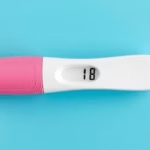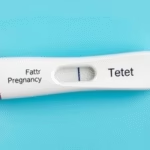Understanding Implantation Bleeding and Menstrual Periods
In this article, we will be talking about how implantation bleeding is different from a period. Implantation bleeding occurs when a fertilized egg attaches to the lining of the uterus, which may result in light spotting. This is typically characterized by a pink or brownish color and may last for a few hours to a few days. In contrast, a menstrual period refers to the monthly shedding of the uterine lining when fertilization does not occur. It usually presents as a heavier flow of red blood lasting between three to seven days. Understanding the differences between these two types of bleeding can help you distinguish between normal physiological processes and potential health issues.
The key distinctions between implantation bleeding and a menstrual period involve timing, color, flow, and accompanying symptoms. Implantation bleeding usually occurs around 6 to 12 days after conception and is often lighter and shorter than a normal period. Recognizing these variations is crucial for individuals trying to conceive or those who may be concerned about unexpected changes in their menstrual cycle.
Timing of Implantation Bleeding vs. Menstrual Period
The timing of both implantation bleeding and menstrual periods plays a vital role in differentiating the two. Implantation bleeding occurs during the luteal phase of the menstrual cycle, generally 6 to 12 days after ovulation. For women with regular cycles, this typically corresponds to the time just before the expected onset of their next period.
On the other hand, a menstrual period occurs roughly every 28 days, although cycles can vary significantly between individuals. Women may experience periods at different times each month due to various factors, including stress, lifestyle changes, and health conditions. Understanding your own cycle’s timing can help you better identify what type of bleeding you may be experiencing.
In summary, the timing of bleeding is essential for discerning between implantation bleeding and a menstrual period. If you notice spotting around the expected date of your period but lighter in flow and color, it may be worth considering the possibility of implantation bleeding.
Color of Blood and Variation in Bleeding
The color of the blood is a crucial factor when distinguishing between implantation bleeding and a menstrual period. Implantation bleeding is typically characterized by a light pink or brownish color, contrasting sharply with the bright red blood commonly seen during menstrual periods.
This color difference arises due to the age of the blood. The lighter shades during implantation indicate that the blood is older, meaning it has taken some time to exit the uterus. In contrast, menstrual blood tends to be fresher, thus exhibiting a redder color because it is expelled more rapidly.
It’s also noteworthy that the flow during implantation bleeding tends to be significantly lighter than that of a normal period. While a period can consist of heavier bleeding, implantation bleeding is usually just a few drops. Understanding the colors associated with each type can offer essential clues when determining if you are witnessing implantation bleeding or just the onset of your period.
Flow and Duration Differences
Another significant difference lies in the flow and duration of the bleeding. Implantation bleeding usually presents as a light, spotting phenomenon, lasting anywhere from a few hours to a couple of days. This brief duration is one of the defining features of implantation bleeding.
A typical menstrual period, however, can range from moderate to heavy flow and generally lasts between three to seven days. The first two days are often the heaviest, and many women experience varying intensities throughout their menstruation cycle.
It’s important to keep track of the flow and duration of any bleeding you experience. If you find that the bleeding is short-lived and notably lighter than normal, it may be more consistent with implantation bleeding rather than a menstrual period. Consulting a healthcare provider for an accurate diagnosis is always advisable for any concerns regarding abnormal bleeding.
Accompanying Symptoms and Signs
Accompanying symptoms can also help differentiate between implantation bleeding and a menstrual period. With implantation bleeding, you may notice mild cramping, which is usually less severe than the cramps associated with a menstrual period.
Many women also report experiencing other early pregnancy symptoms alongside implantation bleeding. These can include:
Conversely, a typical menstrual period may come with its own set of symptoms, including:
By keeping track of not only the bleeding but also any associated symptoms, you can gain further insight into what your body is communicating.
Possible Confusion with Other Conditions
Understanding how implantation bleeding differs from a menstrual period can be complicated, especially considering other conditions can mimic these symptoms. Conditions such as hormonal imbalances, polycystic ovary syndrome (PCOS), ectopic pregnancy, or miscarriages can lead to irregular bleeding.
If you experience any significant changes in your menstrual cycle, it is important to consult a healthcare professional for comprehensive evaluation. Less common conditions such as endometriosis or fibroids can also lead to unusual bleeding, which can further increase confusion surrounding the nature of the bleeding.
To minimize confusion, maintaining a journal to document your menstrual cycle, including bleeding patterns, cramping severity, and other related symptoms, can be beneficial. This documentation can provide critical information to your healthcare provider, making it easier to identify any potential problems.
When to Consult a Healthcare Provider
While understanding the differences between implantation bleeding and a menstrual period is essential, knowing when to consult a healthcare provider is just as crucial. If you experience any abnormal bleeding, pain, or dizziness, it is advisable to seek medical attention immediately.
Certain symptoms warrant immediate consultation:
Maintaining open communication with your healthcare provider allows you to clarify concerns and ensure your reproductive health remains a priority.
Final Thoughts
In summary, distinguishing between implantation bleeding and a menstrual period requires attention to timing, color, flow, and accompanying symptoms. Implantation bleeding typically occurs early in the luteal phase of the menstrual cycle and is characterized by light spotting in a pink or brown color lasting for a short duration. On the other hand, menstrual periods involve heavier bleeding that ranges from bright red to dark red, with a longer duration of around three to seven days.
It is crucial to keep a record of your menstrual cycle, observe any changes, and maintain awareness of your body’s signals. Doing so can provide you with valuable insights into what your body is experiencing, ensuring that you can identify potential issues effectively.
If you are uncertain about the nature of your bleeding, especially if you experience severe symptoms or irregularities in your menstrual cycle, it is important to consult a healthcare professional for proper evaluation and advice.
Frequently Asked Questions
1. How long does implantation bleeding last?
Implantation bleeding typically lasts a few hours to 2-3 days.
2. Is implantation bleeding painful?
While some women may experience mild cramping, implantation bleeding is generally not painful.
3. Can you have a period and implantation bleeding at the same time?
No, if you are experiencing a true menstrual period, it will usually overshadow any light spotting from implantation bleeding.
4. Is it possible to have a normal menstrual cycle with pregnancy?
It’s unlikely to have a normal period if you are pregnant. However, some women may experience light bleeding during early pregnancy.
5. What if my bleeding is inconsistent with typical menstrual or implantation bleeding?
If your bleeding does not align with either type, consult a healthcare provider for further evaluation.
Further Reading
What Type of Psychotherapy Is Best for Anxiety?







